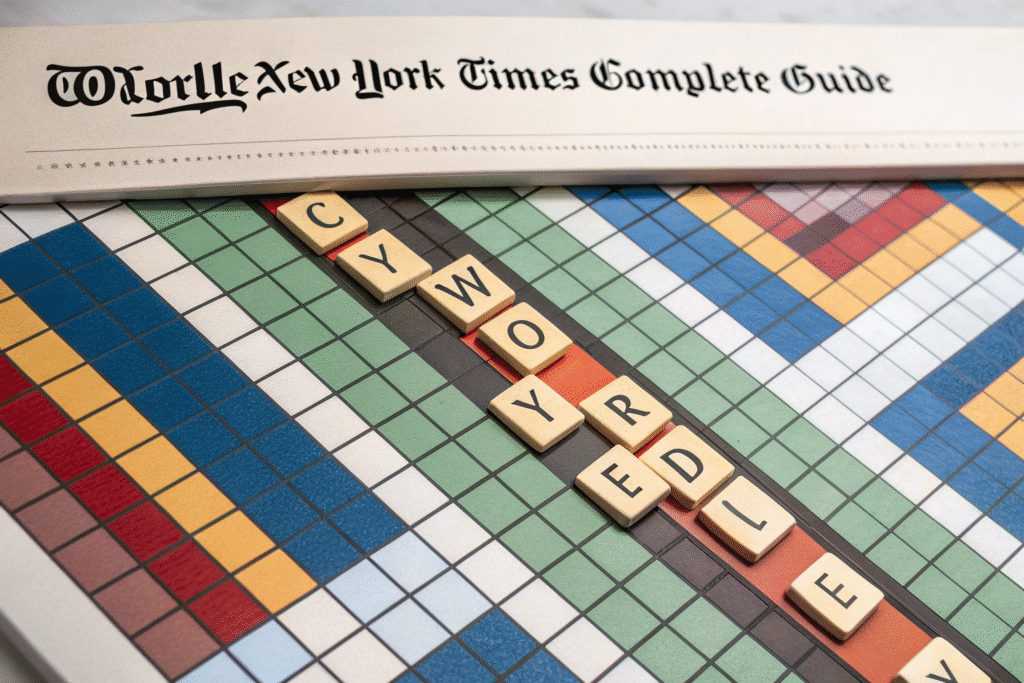Wordle New York Times has become one of the most popular daily word games worldwide attracting millions of players who eagerly attempt the daily puzzle. Each puzzle challenges vocabulary logic and analytical thinking making it both fun and mentally stimulating. Despite the simplicity of the interface New York Times offers deep strategic opportunities for players aiming to improve their performance. Beginners may struggle at first while advanced players refine strategies to reduce the number of guesses needed. This guide explores the mechanics of Wordle New top strategies common mistakes statistics and FAQs to help players maximize success. Players incorporate this daily puzzle into their routines as a fun and mentally engaging activity.
What is Wordle New York Times?
is a daily online word puzzle that challenges players to guess a five-letter word in six attempts. Each guess provides color-coded feedback: green for correct letters in the right position yellow for correct letters in the wrong position and gray for letters not in the word. Originally developed by Josh Wardle Wordle became a global phenomenon and was later acquired by The New York Times. Its simplicity combined with strategic depth keeps players returning daily. is not just entertainment it is a cognitive exercise that improves vocabulary logical thinking and memory skills. Millions of users integrate it into their daily routines as a fun mentally engaging activity.
Key Features:
- Free daily puzzles accessible online
- Mobile-friendly interface for easy access
- Suitable for all ages and skill levels
- Enhances logical thinking and vocabulary growth
How to Play Wordle New York Times
Playing Wordle New York Times effectively requires strategy focus and patience. Players begin by guessing a five-letter word after which the game provides color-coded hints. Carefully analyzing this feedback is essential for making better guesses. Beginners should start with common vowels like A E I and consonants like R S T and N to increase chances of identifying correct letters. Tracking previously attempted letters prevents repeated mistakes while systematically eliminating letters narrows down the possibilities. Over time practice develops intuition for word patterns and combinations essential for improving performance.
Step-by-Step Guide for Beginners
- Start with a common five-letter word containing frequent letters.
- Analyze color-coded feedback after each guess.
- Track letters that have already been attempted.
- Eliminate impossible letters to focus on likely candidates.
- Make logical guesses rather than random ones.
Top Tips to Improve Your Daily Puzzle
Achieving consistent success in Wordle New York Times requires applying strategies and observing patterns in the puzzles. Effective starter words like “CRANE,” “SLATE,” or “TRACE” cover multiple common letters and maximize feedback. Players should avoid rare letters (Q Z X J) in early guesses. Focusing on vowels early increases efficiency while observing thematic or seasonal puzzle trends helps anticipate potential answers. Regular practice improves recognition of word patterns and enhances strategic thinking. Combining these tips consistently allows players to solve puzzles faster and enjoy a more rewarding experience.
Common Word Patterns to Know
- Words ending in -ER, -ED, -ING are common.
- Double-letter combinations such as LL, EE, SS appear frequently.
- Consonant-vowel-consonant arrangements often repeat across puzzles.
Wordle New York Times Statistics & Popularity
as grown into a global phenomenon attracting millions of daily users. Over two million players attempt the puzzle daily with the average solved in 4.2 guesses. Peak engagement occurs around noon EST as players worldwide attempt the puzzle simultaneously. Social media amplifies the game’s popularity with users sharing results, streaks, and strategies fostering a competitive and supportive community. This widespread engagement shows how Wordle New York Times has evolved into both a daily ritual and social trend.
| Metric | Data |
| Daily players worldwide | 2+ million |
| Average guesses per puzzle | 4.2 |
| Peak play time | Noon EST |
Advanced Strategies for Daily Wins
Advanced players use structured approaches to solveYork Times puzzles in fewer attempts. Techniques include analyzing letter patterns leveraging word families, and strategically placing vowels and consonants. These methods reduce wasted guesses and increase success rates. Over time players develop an intuition for likely word structures essential for achieving long winning streaks. Online Wordle solvers can assist when stuck but relying on them excessively diminishes cognitive challenge and satisfaction.
Pattern Recognition Techniques
- Identify recurring letter positions from previous puzzles.
- Recognize common sequences like C-V-C-V-C.
- Use previous guesses’ feedback to anticipate likely letters.
Using Word Families Effectively
- Group words with similar consonant-vowel structures.
- Test multiple words in the same family to narrow possibilities.
- Apply logic rather than random guessing to refine solutions.
Common Mistakes to Avoid
Even experienced players make mistakes that hinder performance. Random guessing wastes attempts. Ignoring color-coded hints prevents strategic decisions. Starting with rare letters reduces early success. Overthinking simple puzzles may overlook obvious solutions. Avoiding these pitfalls ensures better results and a more enjoyable experience.
Also Reaf:Wordle for Today – Daily Answers, Hints & Game Insights
FAQs
Q1: Is Wordle New York Times free?
Yes, it is free to play daily on The New York Times website.
Q2: Can I play past puzzles?
Archives are limited; the focus is primarily on the daily puzzle.
Q3: Are there mobile apps for Wordle New York Times?
It is playable via mobile browsers; no standalone app is available.
Q4: How often should I play per day?
One puzzle per day is recommended as a new puzzle is released every 24 hours.
Conclusion
Wordle New York Times is an engaging, mentally stimulating puzzle that strengthens vocabulary logic and problem-solving skills. By employing strategies like starting with common letters analyzing feedback and using advanced techniques such as word families and pattern recognition players can improve their success rates. The game is more than entertainment—it is a daily mental exercise enjoyed worldwide. Wordle New offers a rewarding challenge that encourages cognitive growth while providing endless enjoyment.


